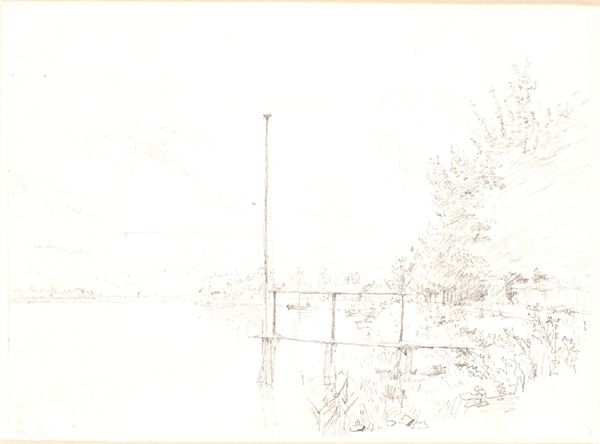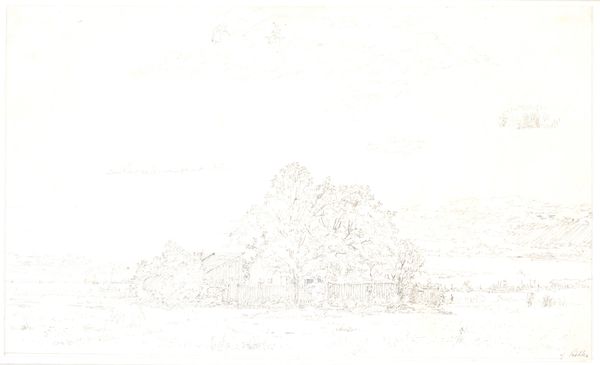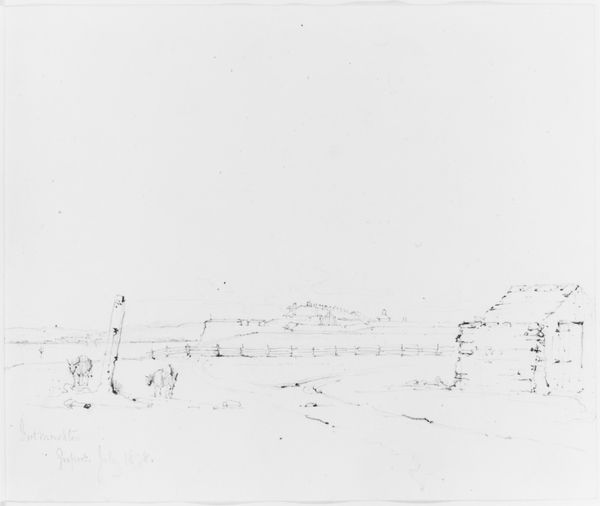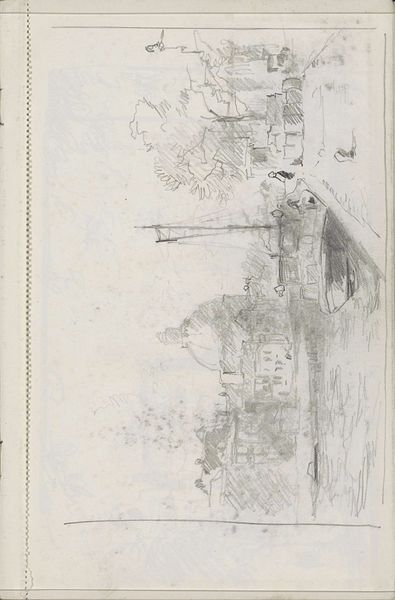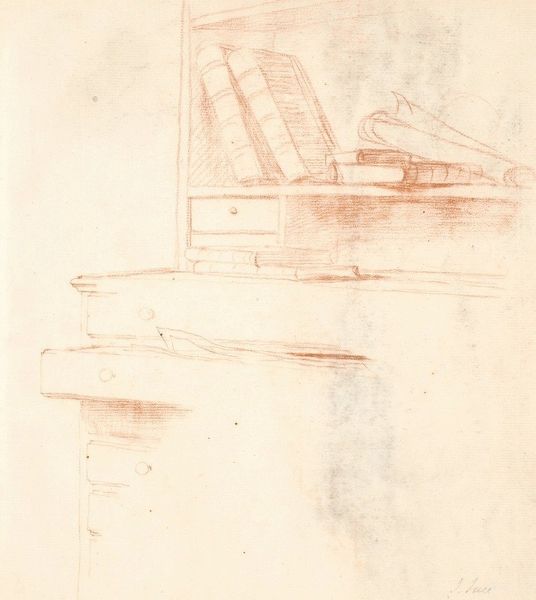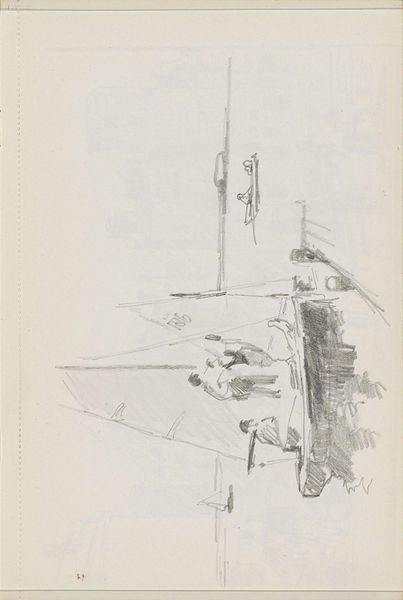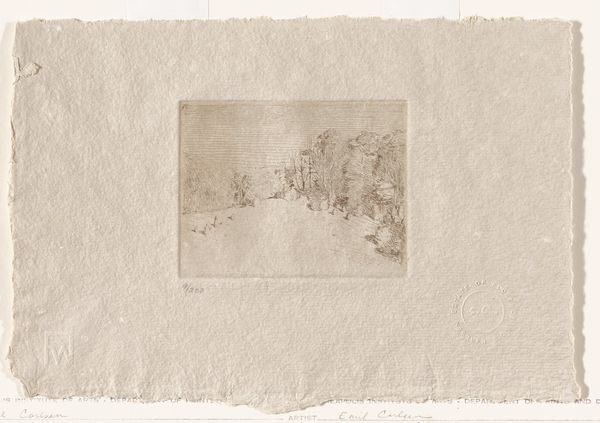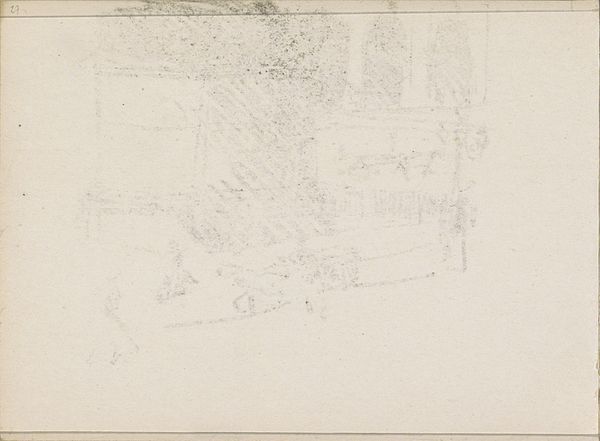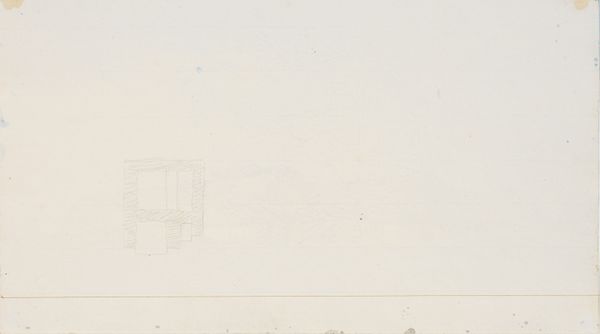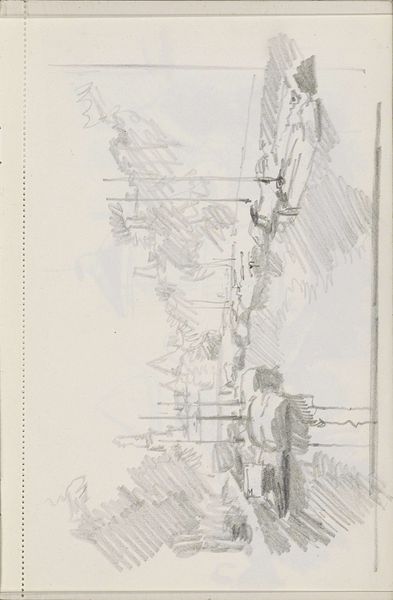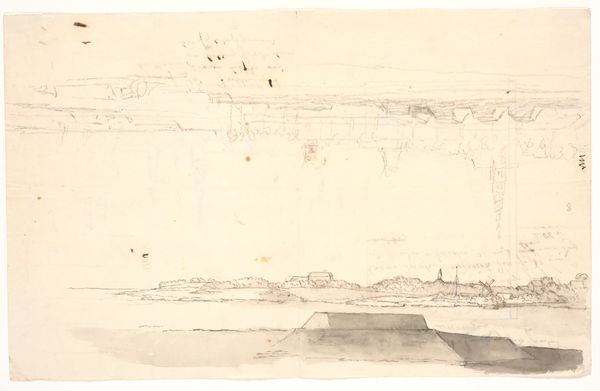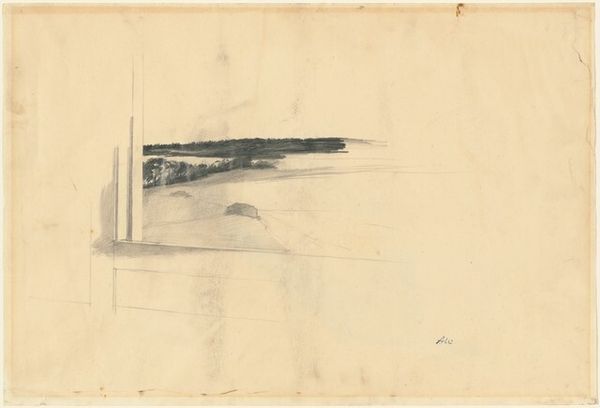
drawing, pencil, architecture
#
drawing
#
landscape
#
etching
#
romanticism
#
pencil
#
architectural drawing
#
architecture drawing
#
academic-art
#
architecture
Dimensions: 215 mm (height) x 333 mm (width) (bladmaal)
Curator: This drawing, rendered in pencil, depicts 'Pier and Detail of Sortedamssøen.' It comes to us from the hand of Christen Købke, created in 1838. The piece currently resides at the SMK, the Statens Museum for Kunst. Editor: The muted tones give it an ephemeral quality, like a half-remembered dream. There is also an element of melancholy and impermanence. Curator: Interesting observation. Let’s consider the Sortedamssøen, a lake which, during Købke’s time, existed on the periphery of Copenhagen. This body of water was more than just a landscape; it played a role in the water supply and waste management of the city, illustrating how society and the natural world are inextricably linked. How do we reconcile its natural appeal and essential urban functions? Editor: That interplay certainly provides an intriguing lens. We are considering how the aesthetics of romanticism can obfuscate pragmatic roles. Moreover, Købke chose to focus not on bustling city life but rather these margins. I suspect he intended to make a statement about class and economic disparities in the era. Curator: Precisely. And it also illustrates the developing social and institutional history of urban planning. Think of the architectural forms visible in the distance. The artist captures subtle interventions, such as the pier itself and even the dwellings beyond. These speak to the social role art plays as we document modifications made to nature to address the demands of a rapidly growing population. Editor: Agreed. This pier could represent the burgeoning industrial revolution in Copenhagen, yet simultaneously feels utterly isolated, far from the city’s noise and urgency. Did Købke realize his work would prompt contemporary dialogue regarding the relationship between infrastructure, societal divisions, and the exploitation of our planet’s resources? Curator: Købke gives us an image reflecting society’s evolving relationship with its environment. This allows us, even now, to investigate and engage critically with such subjects. Editor: For me, that tension is what truly resonates. This sketch is more than meets the eye; it encourages conversations about intersectional narratives.
Comments
No comments
Be the first to comment and join the conversation on the ultimate creative platform.
